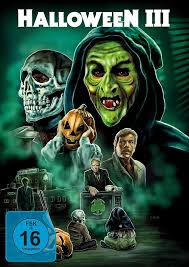
Introduction
Halloween 3: The Season of the Witch, released in 1982, is one of the most controversial entries in the Halloween franchise. Unlike its predecessors, which focused on the notorious Michael Myers, this installment deviated from traditional slasher tropes to explore themes of technology, consumerism, and horror. Its unique narrative and unsettling atmosphere have carved a niche for the film in the horror community and sparked discussions about its relevance to societal issues.
The Plot and Themes
The story centers around Dr. Daniel Challis, played by Tom Atkins, who investigates a series of mysterious murders linked to a popular Halloween mask company, Silver Shamrock. The film features a plot where the masks contain a dangerous chip that, when activated, triggers deadly consequences during a Halloween broadcast. This premise showcases the film’s commentary on the dangers of technology and how it can influence the masses. Instead of following a simple slasher formula, Halloween 3 delves into the intersection of horror and tradition, exploring how the festivities can be manipulated for sinister motives.
Cult Following and Criticism
Upon its initial release, Halloween 3 was met with mixed reviews. Fans of the franchise expected more Michael Myers but were disappointed by the film’s departure from the character’s lore. However, over the years, it has gained a cult following, praised for its bold choices, synthesizer-heavy soundtrack by John Carpenter, and eerie atmosphere. This shift in perspective highlights a growing appreciation for films that challenge conventional horror narratives. Today, many viewers recognize Halloween 3 for its artistic ambition and memorable moments, such as the iconic “Happy Halloween” jingle that lingers in the minds of horror fans.
Modern Context and Influence
The ongoing interest in Halloween 3 can also be seen in its influence on contemporary horror films and media. As audiences increasingly embrace stories that push boundaries, this film’s exploration of societal fears, coupled with its surreal vibe, is relevant in today’s context where technology plays an ever-increasing role in our lives. The film’s ability to provoke thought around consumerism and the darker aspects of holiday celebrations resonates strongly amid today’s varied cultural landscape.
Conclusion
Halloween 3: The Season of the Witch stands as a unique entry in the Halloween franchise, defined by its departure from established norms and criticism. Its rise to cult status emphasizes the potential for horror to explore deeper themes beyond mere scares. As discussions about the film continue to evolve, its significance and relevance in the horror genre will likely endure, prompting viewers to reflect on both the essence of tradition and the implications of technological advancement in society. With Halloween approaching, this film serves as a reminder of the eerie aspects that underpin our festivities.



